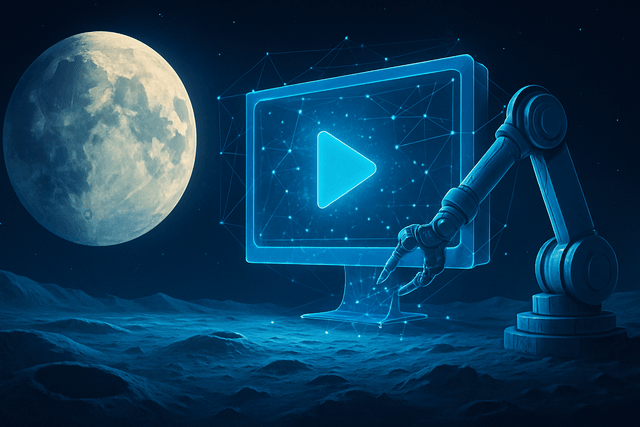Moonvalley's newly released Marey model represents a significant advancement in AI-generated video technology, specifically targeting the needs of professional filmmakers and designers.
What sets Marey apart is its ability to convert sketches combined with text prompts into physics-accurate videos that maintain realistic motion and environmental interactions. Objects move with believable weight, momentum, and timing that follow real-world physics, making every frame look like it was filmed rather than generated. The system outputs high-quality 5-second clips at 1080p resolution and 24 frames per second, meeting industry standards for professional video production.
Visual prompts allow artists to give the model more specific and nuanced direction. Marey responds not only to text but also to storyboards, sketches, photos, and video clips—a key feature for visual thinkers that provides filmmakers the precise control they need. This storyboard and sketch-based input system makes the tool more intuitive for professionals compared to text-only prompt systems, while being more responsive to conditioning inputs like drawings and motion references.
Unlike many AI video generators, Marey was trained entirely on licensed material, including B-roll from independent filmmakers and archives secured through partnerships with platforms like Vimeo. This makes it one of the first commercially safe AI video systems for production environments, reducing the risk of copyright disputes—a growing concern in Hollywood following lawsuits from major studios.
Moonvalley CEO Naeem Talukdar demonstrated how Marey could be used in both pre- and post-production, whether for testing scenes before shooting or adjusting camera angles afterward. The model has an understanding of the physical world that allows it to mimic motion while respecting the laws of physics. For example, a video of a bison sprinting through grasslands can be translated into a Cadillac racing through the same environment, with the grass and dirt responding realistically to the car's movement.
Where many AI models offer prompt-based generation with little refinement, Marey provides what Moonvalley calls a "hybrid filmmaking" approach. It allows for precise camera control, 3D-aware scene manipulation, editable shots post-generation, and tools specifically designed for previsualization, storyboarding, and B-roll generation.
For independent filmmakers, Marey's biggest selling point is that it democratizes access to top AI storytelling tools, especially for creators who have long felt shut out of traditional filmmaking. "Back home, we needed to ask for permission to tell our stories," says filmmaker Ángel Manuel Soto. "AI gives you the ability to do it on your own terms without having to say no to your dreams because someone refused to finance it."
As Moonvalley continues to develop Marey, they plan to roll out new controls like lighting, deep object trajectories, and character libraries in the coming months. This technology could significantly transform pre-production processes by allowing creators to quickly visualize concepts with physically accurate motion, potentially saving substantial time and resources.

